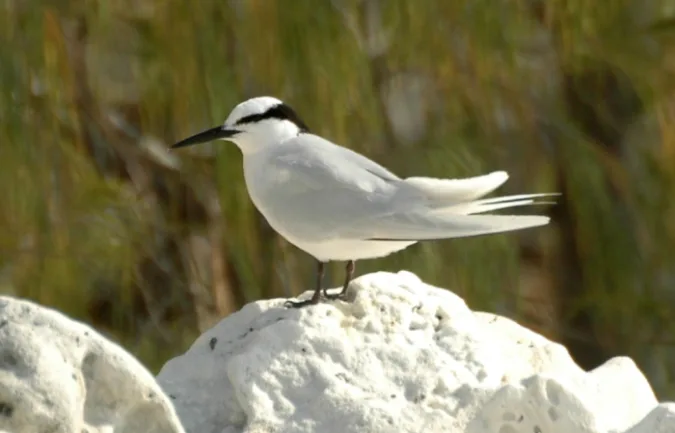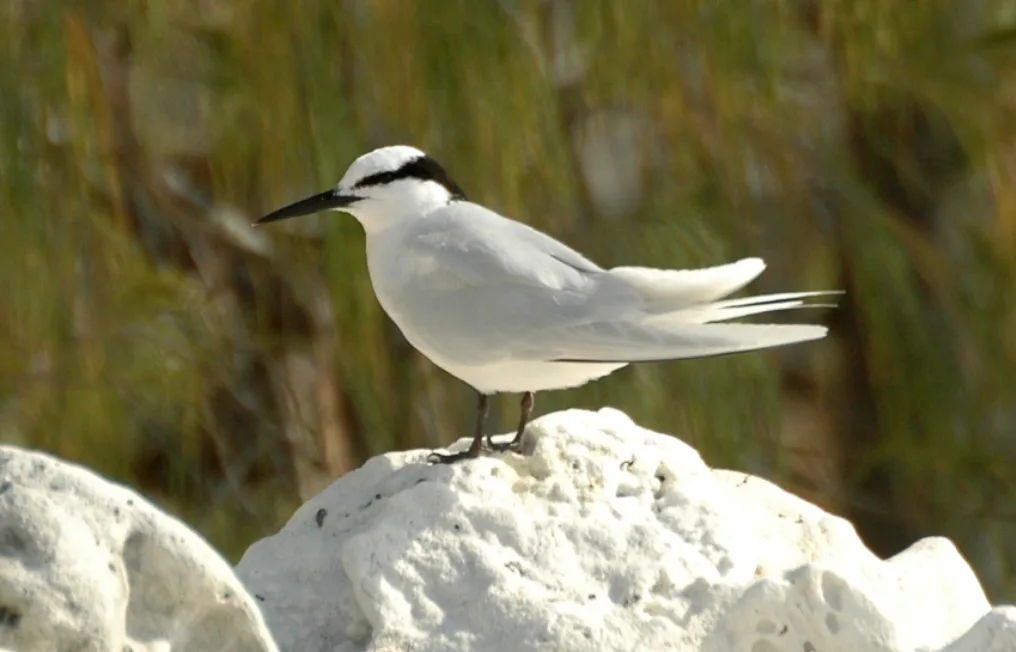
Studies say some birds sense far away storms and alter their migration paths
Studies suggest the birds may be using a combination of cloud observations, wind changes, and sounds undetectable by the human ear to predict the weather.
Migrating birds may be altering their travel patterns based on typhoon activity, according to a recent study by researchers at the Yamashina Institute for Ornithology in Japan.
For their paper, scientists analyzed data from tracking devices attached to six black-naped terns as they flew from Borneo to Sulawesi across the "typhoon highway" in the Philippine Sea.
It was discovered the birds changed their departure times to leave after a typhoon crossed their route.
In an interview with Scientific American Jean-Baptiste Thiebot, a postdoctoral fellow at the National Institute of Polar Research in Japan and the paper's lead author, says the terns may be using the storms as a sign to begin their migration.
That's because typhoons can cause food to churn to the ocean's surface, making for convenient pit stops for travelling birds.
Like the current Pacific season, the 2017 typhoon season was relatively quiet, causing birds to leaver earlier and make few stops along the way.

A black-naped tern. File photo: Avideca/Wikipedia CC BY-SA 3.0
It isn't the first paper to determine that birds can sense large storms and alter their behaviour accordingly. A 2014 study, for example, found that golden-winged warblers in the U.S. began evacuating their breeding territories more than 24 hours before the arrival of a storm that was more than 900 km away. In that study, researchers suspected the birds were using infrasound, which is below the human range of hearing, to detect oncoming weather.
Other researchers speculate birds may observe changing clouds for cues, and a 2016 paper published in Science by Weimerskirch and Prudor found changes in the weather, such as wind and barometric pressure, may also play a role.
Dr. Morgan Gilmour, Ph.D., an adjunct researcher at the University of Tasmania's Institute for Marine and Antarctic Studies who was not involved in the research, says the Weimerskirch and Prudor provides additional insight into how storms impact the way birds act.
"It seems that birds will remain at the colony if winds reach gale-force, but this depends on birds' age and also depends on the species," Dr. Gilmour says in an email.
"If the birds are already at sea, they might fly at higher altitudes than normal, and also avoid the low-pressure centre of a storm by flying further away from it. This could cause them to expend more energy than normal."
OTHER CHALLENGES TO SEABIRDS
In his interview with Scientific American, Thiebot says he would like his findings confirmed in a larger study and notes that an increasing frequency of storms could throw off the birds' ability to detect them, which could place them in dangerous situations.
While the Pacific typhoon season has been realtively quiet, birds migrating across the Atlantic have been met with an unusually active hurricane year. With 28 storms so far, 2020 is currently tied with 2005 as the season with the most-named storms.
"Seabirds are not doing well in the face of climate change," Dr. Gilmour tells The Weather Network.
"Considering that climate change increases the frequency and intensity of storms, many low-lying seabird nesting colonies are affected by sea-level rise and intense storms, which disrupts their nesting habitat."
In addition to that, the more than 8 million tonnes of plastic pollution that are dumped into the oceans annually pose additional risk.
"Adult birds eat plastic at sea, thinking that it is food, and then they feed it to their chicks, who can't feed themselves yet," Dr. Gilmour says.
RELATED VIDEO: PLASTIC POLLUTION COULD DOUBLE BY 2040, ACCORDING TO REPORT
"The chicks can choke on it and plastic can also block their digestive tract, and they can starve. Researchers are also starting to examine effects on the cellular level from plastic toxins after plastic has been ingested. Seabirds also use plastic for nesting material, which is kind of ironic."











